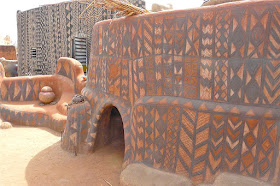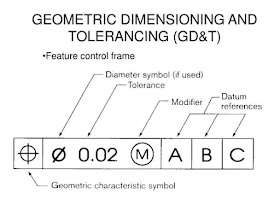Tired
I’m engaged with research at the moment that explores certain aspects of perception, in particular in my case the area of perception that is called ‘interoception’; our awareness of things such as heart rate, a need to urinate, feeling sleepy, having a pain, or emotional states such as feeling the weight of the world on one’s shoulders. These are all ‘real’ things that we feel or perceive but which because we can’t see them, we have no clarity as to how to depict them when we are communicating with other people.
If you have been following this blog you might have noticed that quite a few recent posts have touched upon issues related to this research, but in reality it is an interest that goes back many years to a time when I was teaching observational drawing, and it is an interest that has since been re-kindled by Mike Croft who was my guest blogger just over a year ago, and who posted a very interesting account of where his own research was taking him at the time. Since then our interests have begun to dovetail, my own fascination with how we communicate the un-communicable, has taken me into an area that explores how drawing or image making can operate in the overlaps between perceptual investigation, phenomenology, dream materials and other non-verbal representations of our inner somatic world.
This has led part of my investigation to explore the relationship between psychic experience and its visualisation which was a preoccupation of Marion Milner and other members of the Independent Group of the British School of Psychoanalysis, all of whom were concerned with two central questions: ‘what is the relationship of pictorial expression to a growing awareness of a psychic life’, and ‘what aspects of self experience can be actualised by the making of images in a way that is not possible through verbalisation alone?’
Milner had a long time relationship with a client called Susan, who during this extended period of psychoanalysis began to draw images that reflected her deep unconscious perception of her self-perceived fight with sanity and madness. Milner then reflected on these experiences in a wonderfully rich book, ‘The Hands of the Living God’, a text that contained approximately 150 drawings made by Susan and which when I first saw them, alongside Milner’s interpretations, made me realise how communication is totally reliant on context.


Drawings by 'Susan'
Susan's drawings also reminded me of how much the world of the professional artist can overlap with the world of psychoanalysis, and the fact that similar forms crop up over and over again across world cultures and over vast periods of time, therefore, I would argue, that there is something deeply meaningful about the way that we return to these forms when we need to express our feelings. However the world of therapy is very different from the world of art and Lygia Clark found the cross over fraught with misunderstandings. Clark's work seems to slide between art and therapy, but she I'm sure would argue what she was doing was therapy and not art.
Lygia Clark: Stone and Air: 1966
Louise Bourgeois
Shangaan pottery (South Africa)
Pre-historic cave images
Visual experiences that arrive out of inner vision or entoptic forms were often characterised by abstract geometric patterns, which have been classified into four categories of form constants: (1) gratings, lattices, fretworks, filigrees, honeycombs, and checkerboards. (2) cobwebs. (3) tunnels and funnels, alleys, cones and vessels. (4) spirals. It is believed that these patterns form irrespective of an individual's previous visual experiences. They are internally directed perceptual experiences, directly formed out of the biological structure of our visual system. They reflect the subjective experience of looking into yourself, and the patterns seen it could be argued, expose the underlying operation of our brains.
I have gradually over the years begun to explore the area, initially as a response to those ‘entoptic’ images and more recently, especially because of the importance of 3D computer graphics, I have begun thinking about sets of form ‘primitives’ called geons.
Geons have four basic properties: View-invariance: so one can be distinguished from others from almost any viewpoint. Image stability or resistance to visual noise: i.e. still recognisable when viewed behind a bush. Invariable resistance to recognition failure due to changes in illumination direction, surface markings and texture. High distinctiveness: such as being straight or curved, having parallel or non parallel sides, positive or negative curvature.
These qualitative differences can be readily distinguished thus rendering the geons and the objects composed from them, readily distinguishable as well.
However, there are several limitations to the development of a visual language based on these spatially determined three dimensional differences, the most important it would seem to me, to be that they don't account for the constant dissolving of images back into the world of events. The process of reducing all images to basic geons, suggests that we can pick objects out of the world for contemplation; and that we can atomise our experiences in such a way that a type of Cartesian duality allows an observer to separate out from the subject of observation. I have been at pains to question this possibility in several ways over the past year or so, and I’m indebted to Jorge Louis Borges, who in his short story ‘Tlön, uqbar, orbis tertius’ had this to say; ‘It is no exaggeration to state that the classic culture of Tlön comprises only one discipline: psychology. All others are subordinated to it. I have said that the men of this planet conceive the universe as a series of mental processes which do not develop in space but successively in time.’ Borges put his finger on something that I had not really understood well enough before and this was the relative importance of time and space. I had been for many years prioritising an investigation of space in my drawings and have gradually come round to the idea that time is much more important. The two of course are conjoined in ‘space-time’ but perhaps because of the importance of perspective as a visual system, I had been led to see position as being more important than duration, but I now suspect the opposite is the truth. Cubism was always more about time than space, it was about the difference between the compressed simultaneity of a painting or drawing, made in response to the extended time through which an experience happens. It is this particular conclusion that is the main driving force behind the development of the first body of images that have emerged from this research into inner body feeling. Because the initial experiences, or perceptions are not located in a traditional perspectival space, a form that can see itself from the inside as well as an outside is needed, one more reminiscent of those creatures that inhabited Abbott’s ‘Flatland’ and as I bring Abbott into the discussion perhaps I also then need to acknowledge the importance of W. B. Yates’ poetic observation, that poetry is made out of a ‘mouthful of air’ (1899) something that is also happening as I write these sentences.

Shoulder: inner itch
 |
| The need to scratch an ankle |
References Abbott, E. A. (1992) Flatland: A Romance of Many Dimensions New York: Dover Publications
Biederman, I., (1987) Recognition-by-components: a theory of human image understanding. Psychological review, 94(2), p.115.
Borges, J.L. and Ducornet, R., (1983) Tlön, uqbar, orbis tertius. Erin: Porcupine's Quill.
Dill, M. and Edelman, S., (2001) Imperfect invariance to object translation in the discrimination of complex shapes. Perception, 30(6), pp.707-724.
Edelman, S., (1999) Representation and recognition in vision. London: MIT press.
Froese, T., Woodward, A. and Ikegami, T., (2013) Turing instabilities in biology, culture, and consciousness? On the enactive origins of symbolic material culture. Adaptive Behavior, 21(3), pp.199-214. https://froese.files.wordpress.com/2013/06/froese-et-al-13-turing-instabilities-in-biology-culture-and-consciousness-on-the-enactive-origins-of-symbolic-material-culture.pdf Accessed 5. 2. 21
Halton-Hernandez, E., (2019) Spirals, Whorls, and Faulty Containers: The Psychoanalysis of Form in the Art of Marion Milner’s' The Hands of the Living God' and the Sculpture of Louise Bourgeois. Free Associations, (75), pp.49-64.
Milner, M. (2010) The Hands of the Living God London: Routledge
Yeats, W. B. (1899) The Wind Among the Reeds. New York: J. Lane, The Bodley Head Bartleby.com, 1999. www.bartleby.com/146. Accessed 6. 2. 21
See also:
Posts on various entoptic forms
The spiral
The zig-zag
Posts directly related to the current research on perception
Mike Croft on the observation of perception
Drawing textures































































